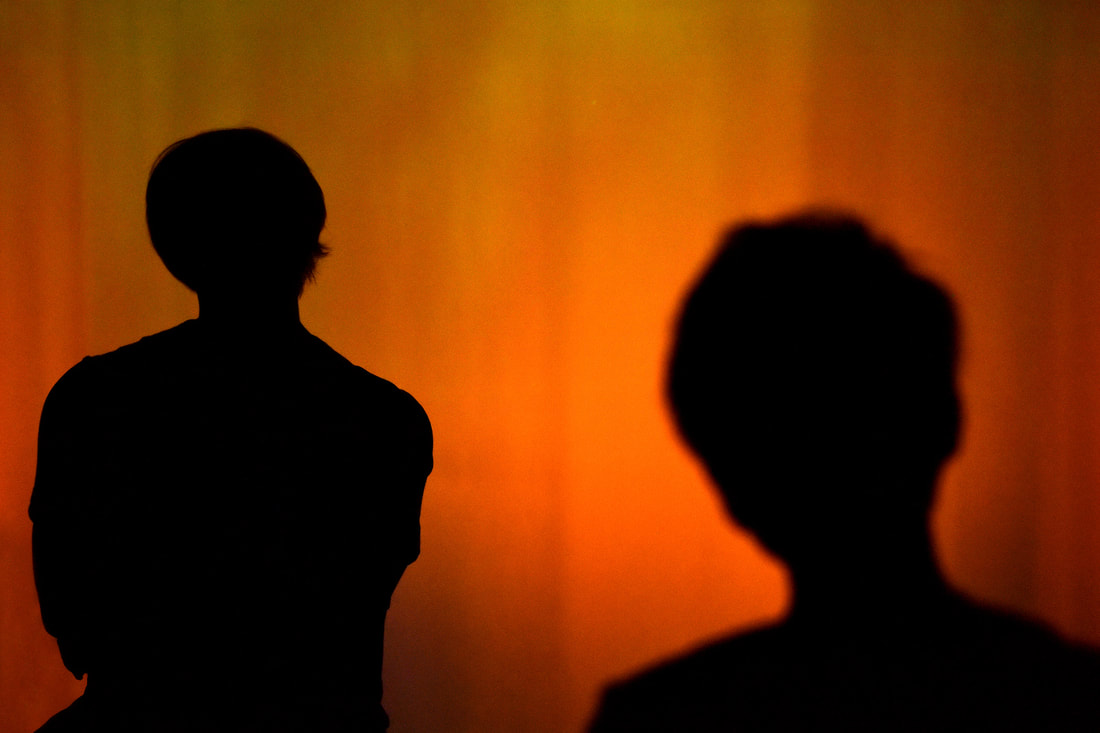Our ears felt like canyons II
|
Concept & Development: Kobe Van Cauwenberghe, Zwerm & Lucas Van Haesbroeck
Live music: Zwerm (Toon Callier, Kobe Van Cauwenberghe, Johannes Westendorp & Matthias Koole) Composition: Heleen Van Haegenborgh, Stephen O’Malley Sound design & Sound engineer: Antoine Delagoutte Scenography & Light design: Lucas Van Haesbroeck. Our Ears Felt Like Canyons II is a production by Zwerm in collaboration with La Muse en Circuit and Muziekcentrum De Bijloke. |
In this second instalment of Our Ears Felt Like Canyons, Zwerm will create a new set of works written for a specific listening environment. Where the first edition translated Pierre Schaeffer's concept of 'acousmatic listening' quite literally by ‘hiding’ the musicians behind a curtain, this second edition will displace the acousmatic ‘cut’ by focussing on the physical almost palpable presence of sound in the room. Stephen O’Malley’s new piece Avaeken displays beating phenomena of precise harmonics in the space of the room allowing rhythm and structure to move around the space, exciting the air and bodies present in a physical way, spinning and moving, with calm, contemplative control and vital energy. In contrast with a new piece by the Belgian composer and pianist Heleen Van Haegenborgh.
Although different in their sonic diffusion, both compositions connect the listening experience with the sense of touch. Enhanced by an adapted staging that carefully shifts between light and darkness, Our Ears Felt Like Canyons II explores different modes of listening using the physical space as an extension of the human body. Kind of like Kurt Vonnegut’s description of harmoniums on the planet of Mercury:
The planet Mercury sings like a crystal goblet. It sings all the time.
Mercury has no atmosphere, so the song it sings is for the sense of touch.
The song is a slow one.
There are creatures in the deep caves of Mercury.
The song their planet sings is important to them, for the creatures are nourished by vibrations.
The creatures cling to the singing walls of their caves.
In that way, they eat the song of Mercury.
The creatures have only one sense: touch.
They are called harmoniums.
K. Vonnegut, The Sirens of Titan
Although different in their sonic diffusion, both compositions connect the listening experience with the sense of touch. Enhanced by an adapted staging that carefully shifts between light and darkness, Our Ears Felt Like Canyons II explores different modes of listening using the physical space as an extension of the human body. Kind of like Kurt Vonnegut’s description of harmoniums on the planet of Mercury:
The planet Mercury sings like a crystal goblet. It sings all the time.
Mercury has no atmosphere, so the song it sings is for the sense of touch.
The song is a slow one.
There are creatures in the deep caves of Mercury.
The song their planet sings is important to them, for the creatures are nourished by vibrations.
The creatures cling to the singing walls of their caves.
In that way, they eat the song of Mercury.
The creatures have only one sense: touch.
They are called harmoniums.
K. Vonnegut, The Sirens of Titan







